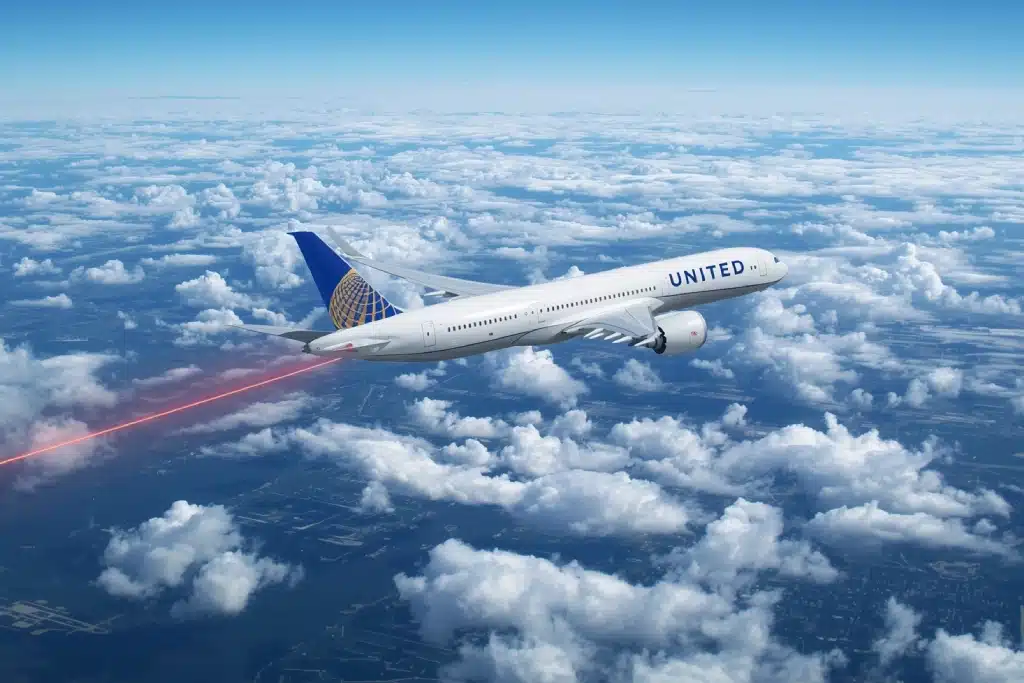United Airlines Flight UA770 made global headlines when it declared an emergency mid-flight, leading to an emergency diversion to London Heathrow Airport. The flight, operating a Boeing 787-9 Dreamliner from Barcelona (BCN) to Chicago (ORD), was forced to turn back due to a critical cabin pressurization issue. This incident, marked by a squawk 7700 emergency code, raised questions about aviation safety and crew preparedness. In this article, we’ll dive into the details of the United Airlines Flight UA770 emergency diversion, explore its causes, provide the latest status, and offer insights into why such diversions happen and how passengers can respond.
What Caused United Airlines Flight UA770’s Emergency Diversion?
Cabin Pressurization Failure
On May 27, 2025, United Airlines Flight UA770, carrying 257 passengers and 12 crew members, encountered a cabin pressurization issue approximately 90 minutes after departing Barcelona–El Prat Airport (BCN) at 2:30 PM CEST. Cabin pressurization systems maintain safe air pressure at cruising altitudes (37,000 feet in this case), preventing health risks like hypoxia, dizziness, or shortness of breath. When onboard systems detected a pressure drop, the Boeing 787-9’s Airplane Health Management (AHM) system alerted the crew, prompting immediate action.
The pilots issued a squawk 7700, a universal emergency code that prioritizes the aircraft with air traffic control (ATC). The flight, originally over the Atlantic, diverted to London Heathrow Airport (LHR), a United hub with advanced maintenance facilities. According to aviation safety expert Dr. Michael Harrison, “Cabin pressurization issues, though rare, are critical. The crew’s swift response reflects rigorous training and adherence to safety protocols.”
Crew and ATC Coordination
The pilots executed an emergency descent to a safer altitude (10,000 feet) to stabilize cabin pressure, coordinating with ATC centers in London, Paris, and Madrid for a clear flight path. The aircraft landed safely at Heathrow’s Runway 27L at 4:45 PM BST, with emergency crews on standby. The crew’s use of fly-by-wire technology ensured precise handling, while flight attendants reassured passengers, maintaining calm throughout the ordeal.
Technical Insights
The Boeing 787-9, registered as N26902, relies on advanced systems like AHM to monitor aircraft health in real-time. The pressurization fault was traced to a minor mechanical issue in the outflow valve, which regulates cabin pressure. Post-landing inspections confirmed the issue was resolved, allowing the aircraft to return to service.
Current Status of United Airlines Flight UA770
As of August 10, 2025, the United Airlines Flight UA770 emergency diversion has been fully resolved. After landing safely at London Heathrow, the aircraft underwent a thorough inspection by United’s maintenance team. No injuries were reported, and passengers were rebooked on alternate flights to Chicago. United Airlines provided meal vouchers, hotel accommodations, and travel credits to affected passengers, adhering to their emergency response policy.
The Federal Aviation Administration (FAA) and United Airlines are reviewing the incident to ensure compliance with safety standards. The aircraft resumed operations within 24 hours, and no further issues have been reported.
Why Do Flights Get Diverted?
Flight diversions, like the UA770 emergency, are rare but critical for passenger safety. According to the FAA, less than 1% of flights are diverted annually due to emergencies. Common reasons include:
- Mechanical Failures: Issues like cabin pressurization, engine malfunctions, or avionics failures (e.g., UA770’s outflow valve issue).
- Medical Emergencies: Serious passenger or crew health issues requiring immediate medical attention.
- Weather Conditions: Storms, turbulence, or low visibility at the destination airport.
- Security Threats: Onboard incidents or threats at the destination.
The squawk 7700 code, used by UA770, signals an emergency to ATC, ensuring priority handling. For comparison, other United Airlines diversions in 2025 (e.g., UA32 and UA948) involved similar mechanical issues, highlighting the industry’s proactive safety measures.
What Happens After a Diversion?
Post-diversion procedures prioritize safety and passenger convenience:
- Ground Support: Emergency crews, medical teams, and maintenance staff are deployed. For UA770, Heathrow’s ground teams assisted immediately.
- Aircraft Inspection: The aircraft is grounded for checks. UA770’s pressurization system was repaired within hours.
- Passenger Rebooking: Airlines rebook passengers on alternate flights, often with compensation. United provided seamless rebooking for UA770 passengers.
What Should Passengers Do During an Emergency Diversion?
If you’re on a diverted flight like UA770, follow these steps:
- Stay Calm: Trust the crew’s training to manage the situation.
- Listen to Announcements: Pay attention to updates from pilots and flight attendants.
- Follow Instructions: Keep seatbelts fastened and comply with crew directives.
- Stay Informed: Ask flight attendants about rebooking or compensation options.
Frequently Asked Questions (FAQs)
Why was United Airlines Flight UA770 diverted?
The flight was diverted due to a cabin pressurization issue detected mid-flight, requiring an emergency landing at London Heathrow for safety.
What is a squawk 7700 code?
A squawk 7700 is an emergency transponder code used by pilots to alert ATC of a critical situation, prioritizing the aircraft for landing.
How common are flight diversions?
Diversions are rare, with the FAA reporting less than 1% of flights diverted annually. Most are due to mechanical, medical, or weather issues.
Can passengers get compensation for diversions?
Depending on the airline’s policy, passengers may receive meal vouchers, hotel stays, or travel credits. United Airlines compensated UA770 passengers per their policy.
How do pilots handle emergency diversions?
Pilots follow strict protocols, including emergency descents, ATC coordination, and system checks, as seen in UA770’s safe landing.
Conclusion
The United Airlines Flight UA770 emergency diversion on May 27, 2025, underscores the aviation industry’s commitment to safety. The crew’s swift response, advanced technology, and effective ground support ensured no injuries and minimal disruption. While rare, such incidents highlight the importance of rigorous training and maintenance protocols. As the status of Flight UA770 shows, the issue was resolved efficiently, with passengers safely rebooked and the aircraft back in service.
For travelers, understanding diversions and knowing how to respond can make such experiences less stressful. Stay informed, trust the crew, and leverage airline support to navigate disruptions smoothly.


